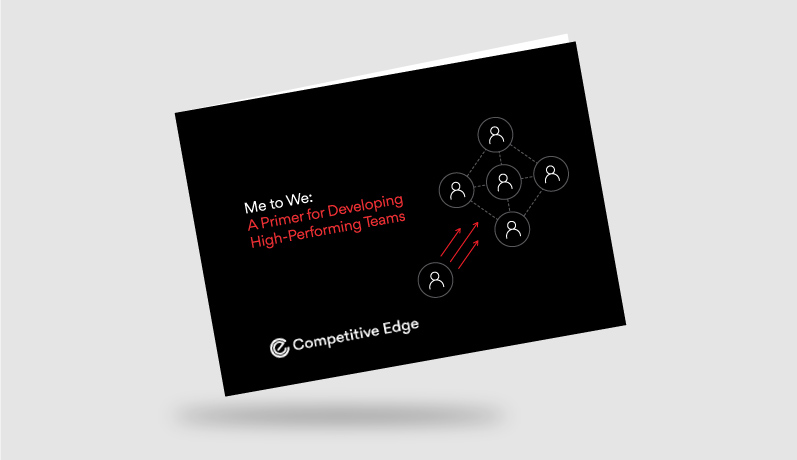Hiring the right candidate is one of the most critical decisions a company can make, yet many interviewers, even those with years of experience, struggle with conducting effective interviews. Often falling into the trap of relying on superficial questions or snap judgements driven by unconscious biases.
Instead of a well-rounded, objective assessment, hiring managers may inadvertently make decisions based on first impressions, personal preferences, or narrow views of the candidate’s skills. The consequences of these unstructured interviews are significant, as hiring the wrong person can result in wasted resources, lost productivity, performance issues and ultimately, damage to the team’s culture and morale.
In today’s fast-paced business environment, where the need for cultural alignment and adaptability is crucial, businesses cannot afford to make such costly mistakes. A structured, thoughtful approach to interviewing is essential for making well-informed hiring decisions that consider both the specific requirements of the role and the broader company culture. This is where the ACE model comes into play—a robust framework designed to help hiring managers and senior leaders avoid common pitfalls in interviews and focus on selecting candidates who will thrive in their roles while contributing positively to the team and company culture.
Introducing the ACE Model
The ACE model offers a clear and comprehensive framework that enables hiring managers to navigate the complexities of the interview process with greater clarity and structure. By focusing on six key areas, the model helps reveal a candidate’s suitability not just for the role but also for the organisation as a whole. It is designed to promote an objective, evidence-based evaluation that moves beyond gut feelings and subjective biases, ensuring that the right person is selected both for their skills and their cultural fit within the company.
The Six Pillars of the ACE Model
- Agility: The ability to adapt is key in a rapidly changing work environment. Can the candidate pivot quickly when faced with new challenges or changes in direction? Agility reflects a person’s capacity to stay flexible, learn on the go, and adjust their approach when circumstances shift.
- Attitude: A candidate’s mindset is just as important as their skill set. Does the individual exhibit positivity, resilience and a growth mindset, or do they display signs of a fixed mindset? Attitude can be a strong predictor of how well someone will cope with setbacks and how they approach both success and failure.
- Competence: This area assesses whether the candidate has the necessary skills, knowledge and behaviours to perform the job to a high standard. Competence ensures that the individual can not only meet but exceed the technical and functional requirements of the role.
- Capability: Capability addresses the practical aspects of the job. Is the candidate physically and logistically able to meet the demands of the role, such as time commitments or travel requirements? This is often an overlooked area, but it’s essential for ensuring that the candidate can realistically take on the responsibilities of the position.
- Experience: What does the candidate’s CV reveal about their past roles, and how does that experience prepare them for this specific position? Experience provides insights into the candidate’s history of responsibilities, achievements and how they have handled challenges in their previous roles.
- Evidence: The final pillar is about validation. Can the candidate substantiate their claims with tangible proof? Whether it’s showing results, sharing qualifications, or providing specific examples of achievements, evidence ensures that what the candidate says is backed up by real-world performance.
The ACE model provides a structured way to evaluate candidates across these six areas, offering a balanced approach that goes beyond surface-level assessments. This helps ensure that new hires not only possess the necessary skills but also align with the organisation’s culture and values.
Structuring the Interview Process
The ACE model is much more than just a tool for conducting interviews. It serves as a comprehensive framework that enhances the entire hiring process, helping organisations make smarter, more informed decisions from the moment they start reviewing candidates to the final stages of feedback. By breaking the process into three phases—before, during, and after the interview—the ACE model ensures that every step is handled with purpose and precision.
Before the Interview: Creating a Benchmark
The first phase begins long before the interview. Using the ACE model, hiring teams can create a clear benchmark for the ideal candidate. This process involves identifying the critical attributes that are necessary for success in the role, not just in terms of skills but also in terms of cultural alignment with the organisation. This preparation ensures that all candidates are evaluated against consistent, predefined criteria.
Creating this benchmark helps clarify what the company is truly looking for. By having a clear understanding of these attributes before the interview process begins, hiring managers are better equipped to make decisions that align with both the needs of the role and the broader organisational culture.
During the Interview: Asking the Right Questions
During the interview itself, the ACE model serves as a practical guide for structuring questions and assessments. Instead of relying on generic or surface-level questions, interviewers can use the six pillars of the model to delve deeper into the candidate’s qualifications and fit. This approach ensures that interviews are focused, structured, and comprehensive, allowing for a more meaningful dialogue with the candidate.
Below are some examples of interview questions for each pillar of the ACE model.
- Agility: “Tell me about a time when you had to pivot quickly—how did you adapt?”
- Attitude: “Can you describe a time when you faced a major setback and how you approached it?”
- Competence: “What key sales skills have you demonstrated in hitting a specific target?”
- Capability: “Given your current personal commitments, how do you handle the travel requirements for this role?”
- Experience: “What’s been your experience in managing teams, and how did you handle leadership challenges?”
- Evidence: “You’ve mentioned leading a team of 20—can you provide examples of what measurable impact you had?”
Structured questions like this enable hiring managers to explore each candidate’s strengths and areas for improvement in detail, moving beyond superficial answers to assess how well they align with the company’s needs.
Click here to request our Free cheat sheet, Which contains more information and examples on how to guide your questions using the ACE model.
After the Interview: Providing Constructive Feedback
Once the interview process is complete, the ACE model continues to be an invaluable tool. It not only aids in the decision-making process but also provides a structured framework for giving candidates constructive feedback, particularly those who do not make it through to the next stage.
Instead of offering vague or generalised feedback, hiring teams can use the ACE model’s six pillars to provide detailed, meaningful feedback that addresses specific areas of the candidate’s performance. For instance, a candidate may have shown strong competence but lacked sufficient evidence to back up their claims. By breaking down the feedback according to the ACE framework, companies can help candidates understand where they excelled and where there is room for improvement. This level of detail enhances the candidate experience and ensures that even those who are not selected leave the process with valuable insights for their future job applications.
A structured, thoughtful interview process is essential for ensuring that the right candidates are hired—those who are not only qualified but also culturally aligned with the organisation. By adopting the ACE model, senior leaders and hiring managers can reduce bias, make more informed hiring decisions, and improve the overall effectiveness and efficiency of their recruitment process.
The ACE model helps foster better workplace culture, improves team performance and ensures that every new hire is a strong fit for both the role and the company’s values. Ultimately, it offers a strategic approach to interviewing that supports long-term success for both the organisation and the individuals it brings on board. By focusing on agility, attitude, competence, capability, experience, and evidence, the ACE model provides a holistic, structured approach to culturally aligned hiring, helping businesses build stronger, more cohesive teams.


